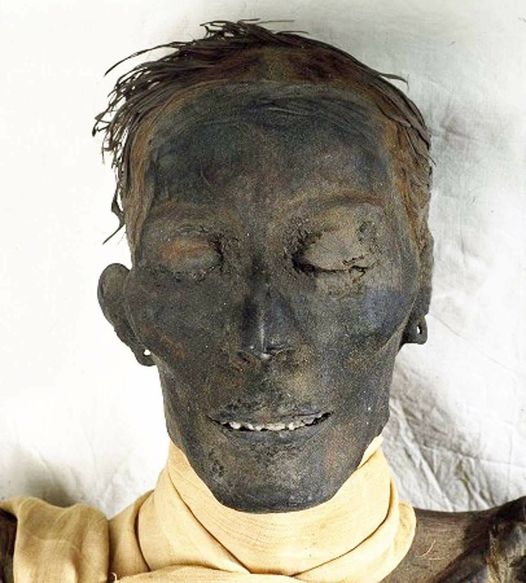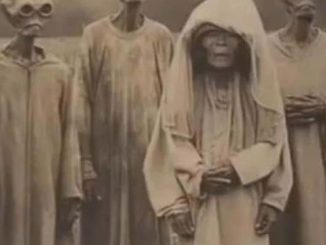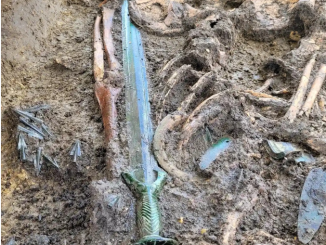A Glimpse into Ancient Egyptian Royalty
The mysteries and wonders of ancient Egypt continue to captivate historians and enthusiasts alike. Among the most fascinating relics from this era is the mummy of Thutmose IV, the 8th Pharaoh of the 18th Dynasty of Egypt. His reign, which occurred approximately in the 14th century BC, is not only significant due to his contributions to Egyptian history but also because of his lineage. Thutmose IV was the son of Amenhotep II, the father of Amenhotep III, the grandfather of Akhenaten, and the great-grandfather of Tutankhamun. This blog post delves into the life and legacy of Thutmose IV, exploring the intriguing details surrounding his mummy and the era in which he lived.

The Ascension of Thutmose IV: A Legacy in the Making
Thutmose IV ascended to the throne under circumstances that some historians suggest were unique. The famous Dream Stele, found between the paws of the Great Sphinx at Giza, tells a story of how Thutmose IV, while still a prince, fell asleep in the shadow of the Sphinx. In his dream, the god Horemakhet-Khepri-Ra-Atum promised him the throne if he cleared away the sand that had buried the Sphinx. This tale, although mythic in nature, highlights the divine right to rule that Egyptian pharaohs often emphasized.
During his reign, Thutmose IV focused on consolidating power and stabilizing Egypt. He continued the military campaigns initiated by his predecessors, particularly in Nubia and Syria, ensuring the empire’s boundaries were secure. His foreign policy was marked by diplomatic marriages, which helped strengthen ties with neighboring kingdoms. Thutmose IV also undertook significant construction projects, including the completion of the obelisk at Karnak, which his grandfather Thutmose III had begun.
The Mummy of Thutmose IV: A Window into Ancient Embalming Practices
The mummy of Thutmose IV offers valuable insights into the embalming techniques and funerary practices of the 18th Dynasty. Discovered in the Valley of the Kings in 1898 by Victor Loret, Thutmose IV’s mummy was initially placed in his tomb, KV43. However, due to concerns about tomb robbers, it was later moved to a cache in the tomb of Amenhotep II (KV35), where it remained hidden until its discovery.
Examinations of the mummy reveal that Thutmose IV died at a relatively young age, around 30. His mummy, like those of other royal individuals, was meticulously prepared. The embalmers used a combination of natron to dehydrate the body and resins to preserve it. Thutmose IV’s face, though withered by time, still bears the regal features of a pharaoh. The mummy was adorned with various amulets and jewelry, signifying his status and the belief in their protective powers in the afterlife.
Modern technology, including CT scans and DNA analysis, has provided further insights into Thutmose IV’s health and lineage. Studies suggest he may have suffered from various ailments, including dental issues and possibly a genetic disorder, which could have contributed to his early death.
3. Thutmose IV’s Reign: Achievements and Challenges
Thutmose IV’s reign, though relatively short, was marked by both achievements and challenges. One of his notable accomplishments was the enhancement of religious institutions. He maintained and restored temples dedicated to major deities like Amun-Ra, reflecting the importance of religion in legitimizing his rule. His reign also saw the continuation of artistic and cultural developments that flourished under the 18th Dynasty.
However, Thutmose IV faced significant challenges as well. Political instability and threats from external forces required constant vigilance. His military campaigns, though successful, were necessary to suppress rebellions and maintain control over Egypt’s vast territories. Internally, he had to navigate the complex dynamics of the royal court and ensure loyalty among powerful nobles and priests.
Thutmose IV’s diplomatic efforts, particularly through marriage alliances, helped solidify Egypt’s relationships with other powerful states. These alliances were crucial in maintaining peace and fostering trade, which in turn contributed to Egypt’s prosperity during his reign.
The Legacy of Thutmose IV: A Dynasty of Influence
Thutmose IV’s legacy extends far beyond his own reign, primarily through his descendants who continued to shape ancient Egypt’s history. His son, Amenhotep III, is remembered as one of Egypt’s greatest pharaohs, known for his extensive building projects and the flourishing of arts and culture during his time. Amenhotep III’s reign marked the peak of the 18th Dynasty’s power and influence.
Thutmose IV’s grandson, Akhenaten, introduced a significant religious transformation by promoting the worship of the Aten, a move that temporarily disrupted traditional Egyptian polytheism. This religious revolution, though short-lived, had lasting impacts on Egypt’s cultural and religious landscape.
Perhaps most famously, Thutmose IV’s great-grandson, Tutankhamun, became one of the most well-known pharaohs in modern times due to the discovery of his nearly intact tomb in 1922 by Howard Carter. Tutankhamun’s tomb provided an unprecedented glimpse into the wealth and splendor of ancient Egypt, making him a symbol of the civilization’s grandeur.
Ancient Discoveries: Connecting with the Past
The discovery of Thutmose IV’s mummy and other ancient relics continues to fascinate and educate people around the world. Each finding adds a piece to the puzzle of our understanding of ancient civilizations, their customs, and their people. Recent advancements in archaeological methods and technologies, such as 3D imaging and genetic analysis, have furthered our ability to study these artifacts in detail.
These discoveries not only illuminate the past but also inspire a deeper appreciation for the complexities of human history. They remind us of the continuity of human endeavors, aspirations, and the quest for immortality through remembrance. As we uncover more about figures like Thutmose IV, we gain a richer understanding of the intricate tapestry of ancient Egypt and its enduring legacy.
Conclusion: The Everlasting Legacy of Thutmose IV
The mummy of Thutmose IV stands as a testament to the rich history and cultural heritage of ancient Egypt. His life, reign, and legacy offer a fascinating glimpse into the world of the pharaohs, filled with both grandeur and challenges. Thutmose IV’s contributions, preserved through his mummy and the historical records, continue to captivate and educate us, bridging the gap between the ancient and modern worlds.
As we delve into the mysteries of the past and uncover new discoveries, we are reminded of the timeless human desire to connect with our history and understand the legacies left by those who came before us. The story of Thutmose IV is but one chapter in the vast and intricate narrative of ancient Egypt, a civilization that continues to intrigue and inspire us to this day.
4o


